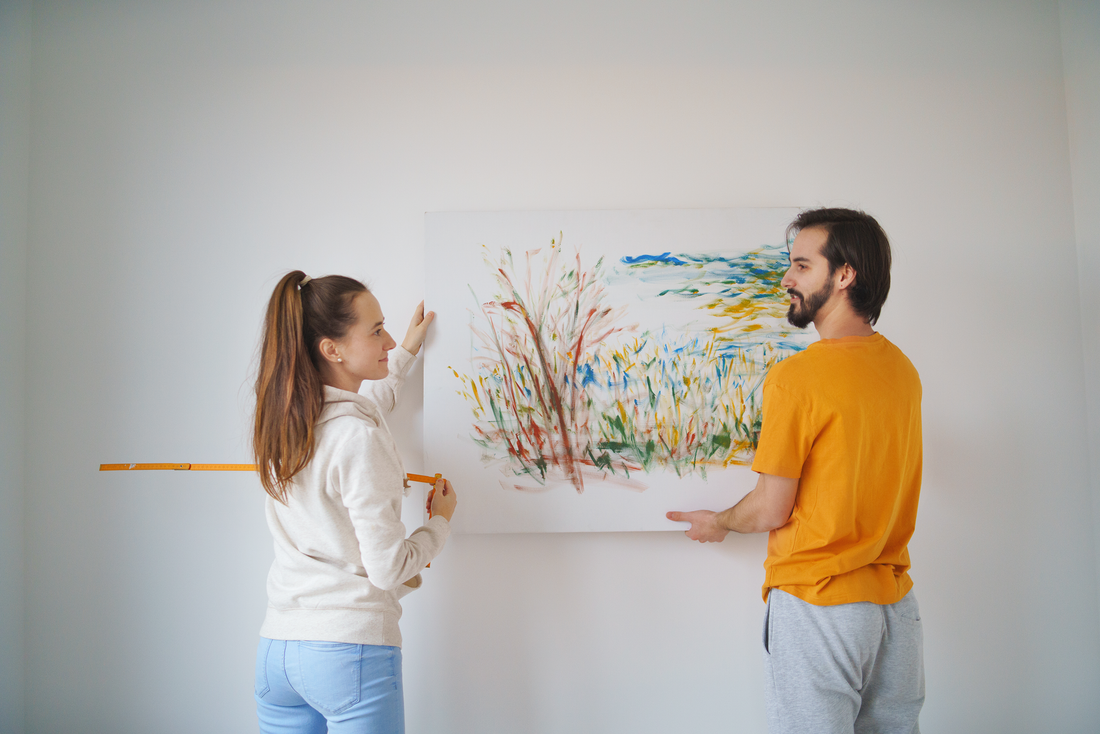
How to Measure Your Wall to Get the Right Size Art
Remember, there’s no hard and fast rule to this. Just a rule of thumb.
A Quick Guide to Measure Your Space for a Wall Art
We’ll help you determine:- How to measure your wall space if you have furniture
- What poster or canvas size to pick from our shop
To find an artwork that covers 60-75% of the visual space.
-
Measure the furniture width and wall space.
If you want to place the artwork above a furniture piece, measure the width of that furniture.
Then, measure the height of the wall from the top of the furniture to the ceiling.
Let's assume for now that you have a standard 2-seater sofa that's 64 inches wide. And that the height from ceiling to the topside of the sofa’s backrest is 70 inches.

-
Multiply the width and height by 0.6 and 0.75.
This formula allows you to get 60-75% of the space.
To get the ideal artwork width:
Let’s assume your furniture is a standard-sized 2-seater sofa that’s 64 inches wide.64-inch sofa width * 0.6 = 38 inches
64-inch sofa width * 0.75 = 48 inches
To get the ideal artwork height:
Measure the vertical space between the top of the furniture like the sofa or the headboard of the bed to the ceiling.70 in * 0.6 = 42 inches
70 in * 0.75 = 52 inches
This means that your wall art can cover between 38-48 inches wide and 42-52 inches in height.

-
Find artwork that fits your measured visual space.
Now that you have your ideal measure for the visual space, it’s time to find an artwork piece. Visit the Hive Artes Collections for all wall art categories.

Tips to Achieve Balance Between Wall Art and Visual Space
How will your artwork fit into the overall design of your space? Are you sure you picked the right size to match your furniture and wall space?Use Multiple Art Pieces for Flexibility
If one piece doesn’t seem enough or you want to create a gallery wall, consider combining frame sizes.
Test Before You Buy
Before buying, test the layout by cutting out paper templates of the artwork sizes and taping them to the wall. This visual trial helps you make adjustments as needed.
Leave Enough Wall Space
Your artwork should have breathing room. Leaving a few inches of blank space around the frame will prevent the room from looking overcrowded and allow the art to stand out.
Consider Art Orientation
Vertical art can make ceilings appear higher and is ideal for narrow wall spaces, while horizontal art tends to elongate a room and works well above furniture like sofas or beds.



